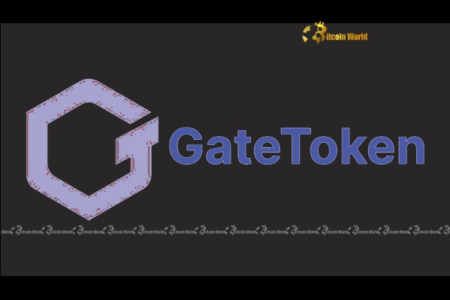Yesterday, Omni Network presented to its audience the new high-performance modular blockchain implementation Octane, capable of connecting the EVM world with CometBFT.
The new framework can be used to create layer-1 networks and decentralized sequencers for layer-2 with extremely high transaction throughput, offering excellent integration opportunities with the Arbitrum, Celestia, and EigenLayer ecosystems.
Let’s see all the details below
Omni Network introduces Octane and solves the problem of combining EVM and CometBFT
Omni Network, a well-known project that aims to unify the various Ethereum layer-2 solutions, introduced a major technological innovation yesterday that could greatly improve the user experience and simplify the lives of developers in the blockchain field.
This is the modular implementation Octane, which is nothing more than a framework capable of being integrated with Arbitrum, Celestia, and Eigenlayer given its extensive connectivity capabilities.
Octane essentially aims to connect the standard EVM with other blockchain applications, breaking down the barrier that separates the possibility of integrating multiple software of different natures.
Any developer will be able to take advantage of this open source implementation to create a custom and high-performance blockchain infrastructure, highly integrated with the external world.
Introducing Omni Octane.
Octane is an open source, performance-optimized EVM framework launching with integrations from @CelestiaOrg, @arbitrum, and @eigenlayer.
Octane’s unique design opens the door for new high performance L1 architectures and decentralized sequencers for… https://t.co/UNtcOOkncL pic.twitter.com/zUIBnXTJvf
— Omni Network 🤖 (@OmniFDN) May 8, 2024
In particular, Octane solves one of the biggest unresolved issues in the blockchain sector, namely the connection between EVM consensus engines and CometBFT (formerly Tendermint).
Let’s talk about two inherently incompatible and technologically different components: the first is characterized by advanced development tools and strong network effects while the second provides blockchain with fast and low-latency purposes supporting the Cosmos ecosystem.
Thanks to its modular design, Octane, in addition to offering potential opportunities in the niches of Arbitrum and Celestia, can technically combine any consensus engine to meet specific needs.
Until now, the task of integrating EVM-CometBFT was reserved for Ethermint, a standard that still presents scalability and blockchain maintenance issues.
The main innovations of Octane are based on the Ethereum Engine API and CosmosABCI 2.0, where the Engine API separates the execution environment from the consensus engine, preventing transactions from interfering with the blockchain consensus.
ABCI 2.0 integrates the engine’s API providing a programmable interface for high-performance consensus engines like CometBFT, offering the end user an easy and immediate solution for the development of decentralized applications.
From a consensus perspective, Octane has been specifically designed to support CometBFT, but it also works with other consensus engines that implement ABCI 2.0,
Octane simplifies EVM integration with blockchain applications: opportunities for Celestia, Arbitrum, Monad, and EigenLayer
The maximum connectivity of EVM blockchain applications introduced with the modular Octane framework also brings technical capabilities above average with sub-second purposes, RPC query latencies up to 5 milliseconds and an extremely high transaction throughput.
This potentially allows the development of any kind of high-performance blockchain application on CometBFT and other EVM environments, unlocking the true potential of the cryptographic sector.
In this sense, the new implementation of Omni Network finds several opportunities for integration with the Arbitrum, Celestia, EigenLayer ecosystems, and many others
Peter Haymond, Senior Partnerships Manager at Offchain Labs (the organization behind Arbitrum) used the following words to describe the benefits brought by Octane:
“With the proliferation of Arbitrum Orbit chains, Omni’s Octane brings us one step closer to fulfilling their mission of uniting all rollups and creating a smoother and more integrated Ethereum experience for end users.”
Octane can be used both to develop layer-1 networks with optimized performance, or to implement decentralized sequencers in layer-2 networks, maintaining the typical speed of centralized counterparts.
Indeed, it works with any EVM client, and can also be used to optimize implementations on the new Monad blockchain or on Movement.
In addition, it can be connected to data availability networks (DA), such as Celestia or EigenDA (AVS by EigenLayer), thanks to low-cost blockchain expertise.
Regarding the introduction of Octane, Nima Vaziri from Eigen Labs commented in a press release:
“The implementation of Octane EVM can be used both to create new high-performance chain AVS protected by restaking, and for rollups with decentralized sequencers using EigenDA to achieve fast confirmations and high throughput. We are excited to see the proliferation of tools in the Eigen ecosystem that will help accelerate open innovation.”
The only requirement to take advantage of the opportunities brought by Octane is the “Open Interoperability Requirement” which requires projects to establish and maintain an IBC connection to the Omni network within 90 days of production implementation.
It is possible that the Omni team will also add IBC connections and other networks in the future so that the framework can prevent liquidity fragmentation on-chain and connect most cryptographic ecosystems.
Even Tyler Tarsi, CTO of Omni Labs, has publicly spoken to comment on this huge success by his team:
“The high-performance architecture of Octane has only been made possible in the last six months thanks to recent advancements in ABCI++ and the Ethereum Engine API. It has unlocked a completely new class of performance that no previous generation EVM implementation was able to achieve. This was crucial in creating the Omni Network itself and we are proud to see so many teams interested in using Octane in their own stacks.”
Read the full article here









